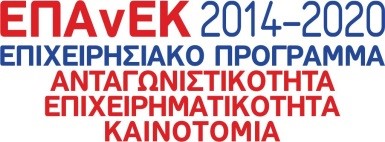4 ways an ECM system can support decision making

Decision-making is a process that is at the heart of every business and concerns all management executives every day. These are actions that unfortunately most people believe that:
We can have good decisions or quick decisions, but not both.
In recent research by McKinsey with more than 1,200 participants – executives of global companies:
- Fewer than half of respondents say decisions are timely.
- More than 60% say at least half the time spent downloading them is ineffective.
However, the cost of the above is also impressive. Research shows that managers in a typical Fortune 500 company may waste more than 500,000 days a year on ineffective decision making and these days can equate to approximately $250 million in wages annually.
So, what is the obstacle?
What are the prerequisites for good decision-making?
Certainly a first basic step is to organize the information and display it in real-time and correctly classified. In this way a solid basis for decision-making can be established.
An Enterprise Content Management system like Papyros ECM Platform, is a starting point for every effort to improve intra-company processes.
The reason is that it gathers all the business information, indexes it and makes it instantly retrievable.
Here are 4 ways in which ECM systems speed up access to the necessary information for decision making:
1. Unlimited access to information for decision making
Work now leaves the narrow confines of an office, a corporate building, and can be done anywhere, anytime. In addition to the pandemic that strengthened the “work from home” movement, most C-Levels of a company now use their mobile or tablet to a large extent.
With Papyros Mobile App you can access your documents, tasks, and to-dos whenever you want. This mobile application provides you with the ability to:
1. Preview your documents
2. Approve workflows with digital signatures
3. Get your tasks done
4. View your to-do lists
5. Search & retrieve files
2. Information gathering in one single place
Usually each department has its own software. Accounting has ERP, sales and marketing has CRM, management has BI, etc. When someone is looking for information, they have to search multiple information systems, often to no avail, but always having lost significant time.
The solution is an ECM system that runs horizontally across all departments of the business and acts as a single point of truth for all information. Thanks to Papyros Web Services / Papyros API the interconnection of all systems can become a reality. At the same time, they provide direct access to information from all departments, creating the basis for correct and quick decision-making.
3. Metadata attribution
Information is not enough to be gathered in one place, it must also be properly archived so that it can be searched. It is therefore necessary for each file to be associated with specific values (metadata). Thus, it can be retrieved not on the basis of where it has been stored but on the basis of what it is.
With Papyros ECM’s automated archiving you save significant time as the system collects document data and stores it in digital forms, either manually or automatically. Even better, you can design these forms yourself, with Papyros Form Designer, so that they exactly reflect your business logic and be adaptable to any change.
4. Process automation
Often, decision-making takes a back seat as our time is spent executing and monitoring day-to-day tasks and processes. Automation can free your staff from repetitive tasks. At the same time, the management can work remotely from their smartphones, quickly making approval or rejection decisions, even when on business trips.
At the same time, once you standardize simple approval or even complex processes of your organization so that they are performed digitally and automatically through a suitable ECM system, you immediately gain access to critical information about the progress of your issues, as well as the workload of the staff in real-time.
Visibility into internal processes makes business decisions possible. Thus, management can readjust the organization’s priorities.



